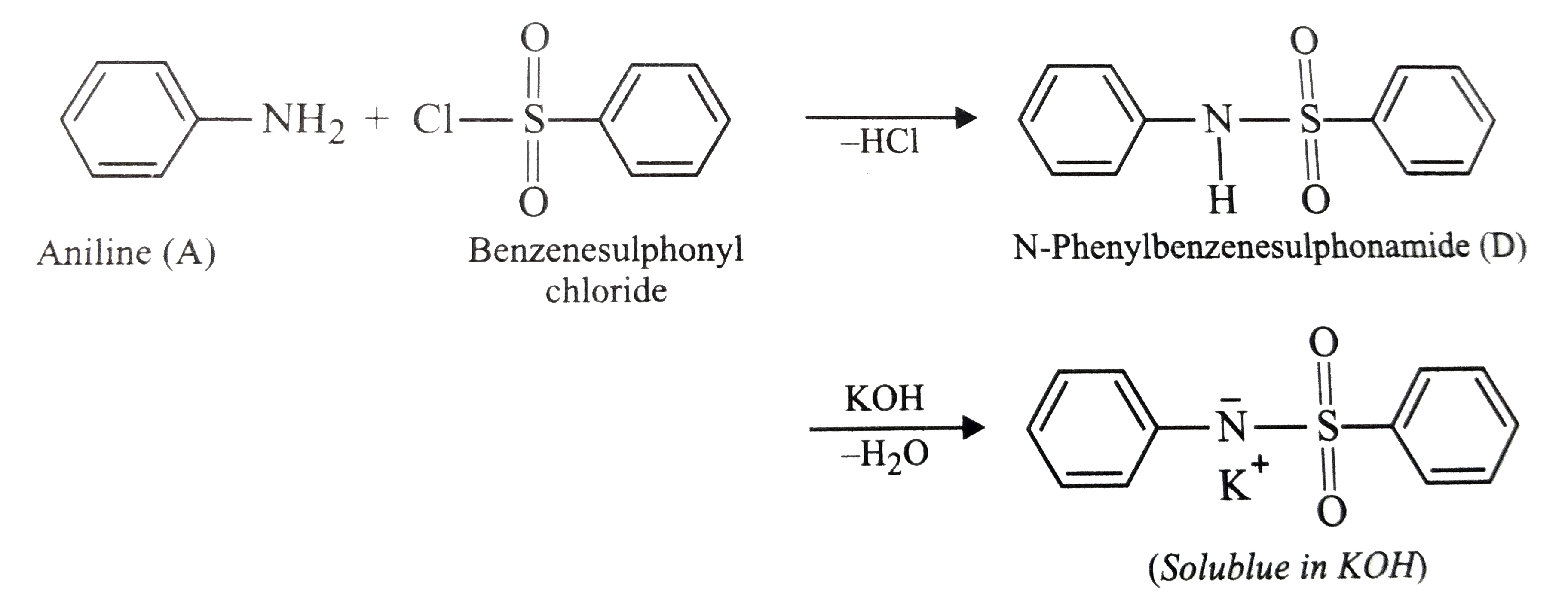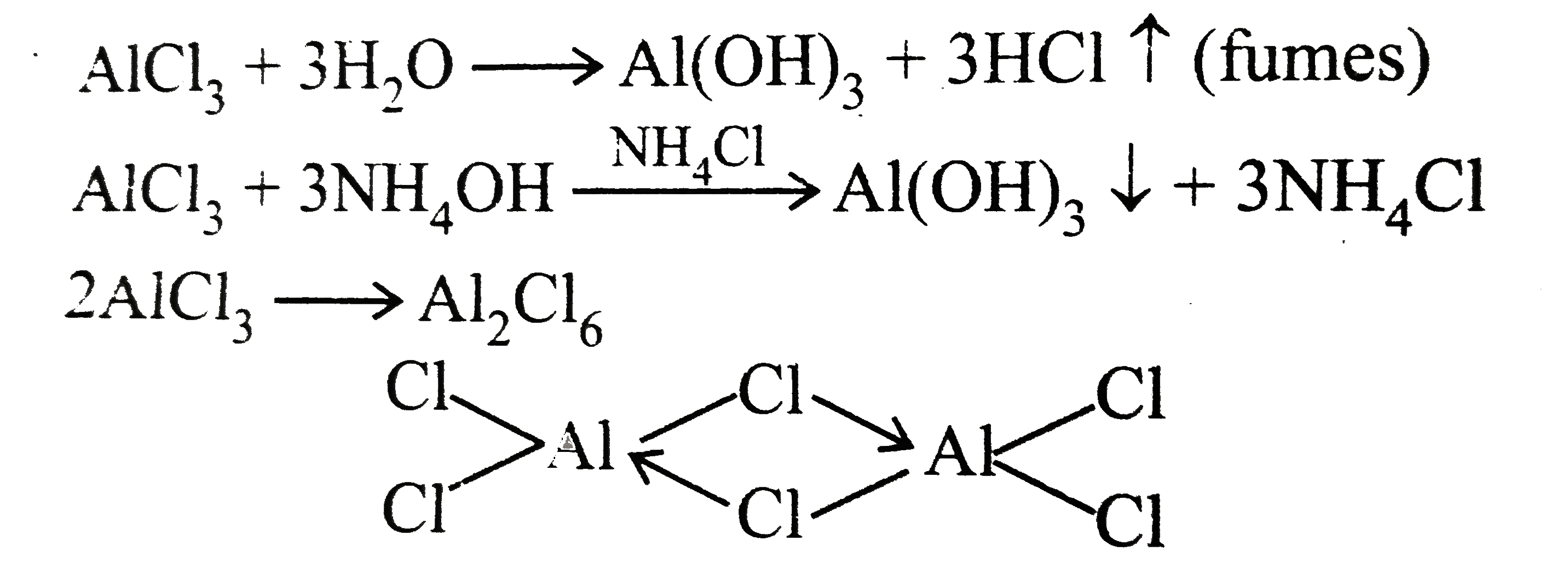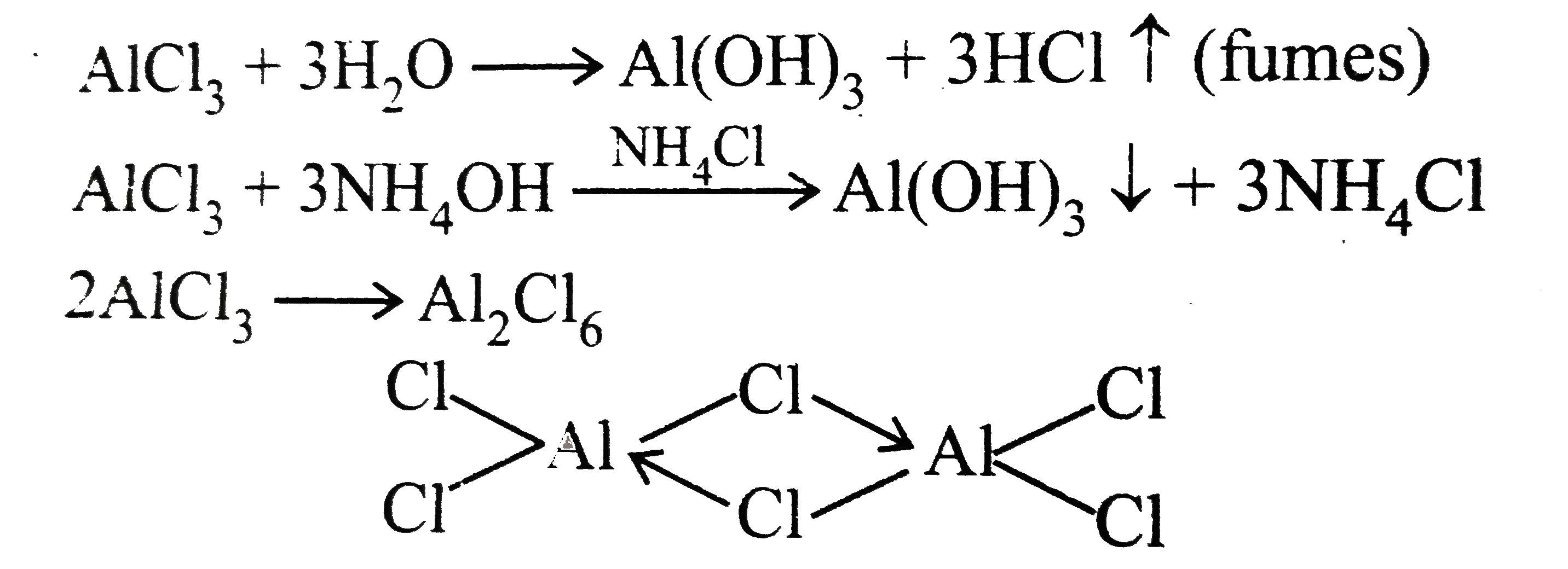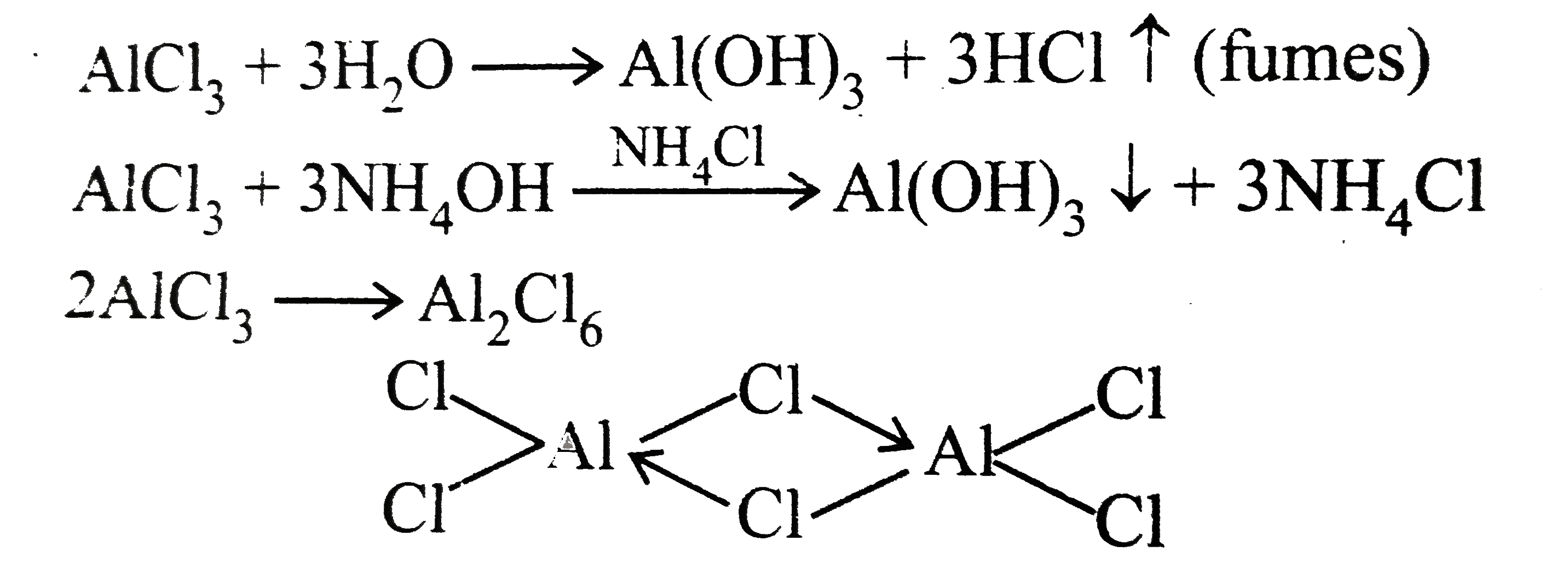InterviewSolution
This section includes InterviewSolutions, each offering curated multiple-choice questions to sharpen your knowledge and support exam preparation. Choose a topic below to get started.
| 90651. |
(a)Complete the following chemical equations : (i) Cr_(2)O_(7)^(2-) (aq) + H_(2)S(g) + H^(+) (aq) rarr (ii)Cr^(2+) (aq)+I^(-) (aq) rarr (b) How wouldyou accound for the following? (i) The oxidizing power is the order :VO_(2)^(+) lt Cr_(2)O_(7)^(2-)lt MnO_(4)^(-) (ii) The thirdionization enthalpyofmanganese (Z= 25) is exceptionally high . (iii) Cr^(2+)is strongerreducting agentthan Fe^(2+). or (a) Complete the following chemical equations : (i) MnO_(4)^(-)(aq) +S_(2)O_(3)^(2-)(aq) + H_(2)O(l) rarr (ii)Cr_(2)O_(7)^(2-)(aq) + Fe^(2+) (aq) + H^(+)(aq) rarr (b)Explain the follwoing observations : (i) La^(3+) (Z= 57)and Lu^(3+) (Z= 71) do not show any colour in the solution. (ii) Among the divalentcations in the first series of transition elements, manganese exhibits the maximum paramagnetism (iii) Cu^(+) ion is notknown in aqueous solutions. |
|
Answer» Solution :(a) (i) `Cr_(2) O_(7)^(2-) (aq) + 3H_(2)S(G) + 8H^(+)(aq) rarr 2Cr^(2+) (aq) +7H_(2)O(l) + 3S(s).`(ii)`2Cu^(2+)(aq) +4I^(-)(aq) rarr Cu_(2)I_(2)(s) +I_(2)(g)` (b) (i)This is due to increasing stability of the lower species to which they are reduced. (ii) Because 3rd electron has to be removed from stable half-filled3d-orbitals `(._(25)Mn= 3d^(5) 4s^(2))`. (iii)`E^(@) ( Cr^(3+) //Cr^(2+))-ve(0.41V) ,E^(@)(FE^(3+) //Fe^(2+))= +ve( +0.77V)` Hence, `Cr^(2+)` is easily oxidized to `Cr^(3+)` but `Fe^(2+)` cannot be easily oxidized to `Fe^(3+)`] or (a) (i)`8 MnO_(4)^(-)(aq) + 3S_(2)O_(3)^(2-)(aq) + H_(2)O(l) rarr 8 MnO_(2)(s) +6 SO_(4)^(2-) + 2OH^(-) (aq) ` (ii) `Cr_(2) O_(7)^(2-) (aq) +6Fe^(2+)(aq)+ 14H^(+)(aq) rarr 2Cr^(3+)(aq) + 6Fe^(3+) (aq) + 7H_(2)O(l)` (b)(i) Becaue they have completely filled 4f subshell. (II) `Mn^(2+)` has MAXIMUM number of unpairedelectrons. (iii) Because`Cu^(+)` in aqueous solution undergoes disproportionation `: 2 Cu^(+)(aq) rarr Cu^(2+)(aq) +Cu(s)` (as`E^(@)` value is favourable for this reaction ) ] |
|
| 90652. |
(a) Complete the following chemical equation : (i) HgCl_2 + PH_3 to (ii)Xe + PtF_6 to (iii) Ca_2P_2+ H_2O to (b) Draw the structures of the following compounds : (i) XeF_4 (ii) H_2S_2O_8 |
|
Answer» Solution :(a) (i) `3HgCl_2 + 2PH_3 to Hg_3P_2 + 6HCL` (ii) `Xe + PtF_6 overset(DELTA)(to) Xe^(+) PtF_6` (III) `Ca_3P_2 + 6H_2O to 3Ca (OH)_2 + 2PH_3` (b) (i) `XeF_4` 
|
|
| 90653. |
(a) Complete the following chemical equation: (i) Cr_(2)O_(7)^(2-)(aq)+H_(2)S(g)+H^(+)(aq) to , (ii) Cu^(2+)(aq)+I^(-)(aq) to (b) How would you account for the following: (i)Theoxidising power of oxoanion are in the orderVO_(2)^(+)ltCr_(2)O_(7)^(2-)ltMnO_(4)^(-). (ii) The third ionization enthalpy of manganese (Z=25) is exceptionally high. (iii) Cr^(2+) is a stronger reducing agent than Fe^(2+). Or (a) Complete the following chemical equation: (i) MnO_(4)^(-)(aq)+s_(2)O_(3)^(2-)(aq)+H_(2)O(I) to (ii) Cr_(2)O_(7)^(2-)(aq)+Fe^(2+)(aq)+H^(+)(aq) to (b) Explain the following observation: (i) La^(3+)(Z=57) and Lu^(3+)(Z=71) donot show any colour in solutions. (ii) Among the divalent cation in the first series of transition elements, manganese exhibits the maximum paramagnetism. (iii) Cu^(+) ion is not known in aqueous solutions. |
|
Answer» |
|
| 90654. |
(a) Complete the following chemical equations for reactions in aqueous media : (i) Cr_(2)O_(7)^(2-)+H^(+)+Fe^(2+)to (ii) MnO_(4)^(-)+I^(-)+H^(+)to (b) How many unpaired electrons are present in Mn^(2+) ion (At. no. of Mn = 25] ? How does it influence magnetic behaviour of Mn^(2+) ions ? |
|
Answer» Solution :Completed reactions are given as under : (a) (i) `Cr_(2)O_(7)^(2-)+14H^(+)+6Fe^(2+)to2Cr^(3+)+6Fe^(3+)+7H_(2)O` (ii) `2MnO_(4)^(-)+10I^(-)+16H^(+)to 2MN^(2+)+8H_(2)O+5I_(2)` (b) `Mn^(2+) : 3d^(5)4s^(0)` has 5 UNPAIRED electrons. It is HIGHLY paramagnetic and it is attracted by magnet. |
|
| 90655. |
(A) Compared to Br_(2),Icl is more reactive (R ) Br_(2) is non -polar ,but Icl is polar |
|
Answer» Both (A) and (R ) are true and (R ) is the CORRECT EXPLANATION of (A) |
|
| 90656. |
(a) Compare the packing efficiency of square close packing, hexagonal close packing and cubic close packing. (b) Give the values of packing efficiency in (i) hcp or ccp and (ii) body-centred cubic crystals. |
|
Answer» Solution :(a) PACKING efficiencies of HCP and ccp are identical, but the packing efficiency of square close packing is smaller. (B) Packing efficiency of hep or ccp `= 74%` Packing efficiency of body-centred CUBIC `= 68%` |
|
| 90657. |
(a) Compare physisorption and chemisorption on the basis of (i) specificity, and (ii) enthalpy of of adsorption. (b) Differentiate between adsorption and absorption. |
|
Answer» Solution :(a) (i) Specificity: In physisorption, a given surface of an adsorbent does not show any preference for a PARTICULAR gas as the van der Waals forces, that are involved in this TYPE of adsorption are universal. Chemisorption is highly SPECIFIC and it will only occur if there is a some possibility of chemical bonding between the adsorbent and adsorbate. (ii) Enthalpy of adsorption : Enthalpy in physical adsorption is quite low and lies in the range of `20-40"kJ mol"^(-1)`. This is because it involves only weak van der Waal.s forces. Enthalpy of chemisorption is high `(80-240"kJ mol"^(-1))` as its involves chemical bond FORMATION. (b) In adsorption, the substance is concentrated only at the surface and does not penetrate through the surface to the bulk of the absorbent. In absorption, the substance is uniformly distributed THROUGHOUT the bulk of the solid. |
|
| 90658. |
A comparative study of E^(@)(M^(3+)|M^(2+)) values show varying trends. Choose the correct trends (along with possibe reason) among the following. |
|
Answer» Low value for Sc reflects the stability of `Sc^(3+)` which has a noble GAS configuration. |
|
| 90659. |
A company used talcum powder contains 20% NaAl(SO_(4))_(2), 30% NaHCO_(3), 10%, Ca(H_(2)PO_(2))_(2) and 40% of starch. Which of the following statements are correct? |
|
Answer» `Ca(H_(2)PO_(4))_(2)` is acidic and when moistened it reacts with `NaHCO_(3)` evolving `CO_(3)` gas. |
|
| 90660. |
A comound with the molecular formula C_(4)H_(10)O_(3) is converted by the action of acetyl chloride into a compound with molecular mass 190. The original compound has |
|
Answer» no `- OH` GROUP During the reaction of COMPOUND containing an `OH` group (such as alcohol) with acetyl chloride, the hydrogen atom (of `OH` group) is replaced by an acetyl group `(CH_(3)CO-)`. this results in net increases in molecular MASS by `42` units. `-H+CH_(3)-overset(O)overset(||)(C )-rarr(-1)+(43)rarr42` Thus number of `OH` groups should be equal to the total increases in molecular mass divided by `42`. Molecular mass of compound before acetylation ltbRgt `=(12xx4+10xx1+16xx3)` `=106` Molecular mass of compound after acetylation=`190` `:.` No. of `OH` groups`=(190-106)/(42)=(84)/(42)=2` |
|
| 90661. |
A common metal widely used in the displacement method to obtain other metals is |
|
Answer» Cu |
|
| 90662. |
A common metal widely used in electrical cables and kitchen ware is |
|
Answer» Fe |
|
| 90663. |
A common metal widely usedin electrical cables and kitchen ware is |
|
Answer» Fe |
|
| 90664. |
A common metal that is used for the extraction of some metals from their oxides is |
|
Answer» Cr |
|
| 90665. |
A common material used in the preparation of aspirin , plasticand picric acid is __________. |
|
Answer» METHANE |
|
| 90666. |
A common food preservative in squashes and fruit juices is |
|
Answer» SODIUM metabisulphite |
|
| 90667. |
"A commerically available sample of sulphuric acid is 15% "H_(2)SO_(4)" by mass" ("density "= 1.10 g mL^(-1)). Calculate : Molarity Normality Molality of solution. |
|
Answer» Mass os `H_(2)SO_(4)` in solution= 15 g Mass os solvent (water) = 100-5 = 85 g Molar mass of `H_(2)SO_(4) = 98 " g mol"^(-1)` `"Molality of solution (m)"=("Mass of" H_(2)SO_(4)//"Molar mass of" H_(2)SO_(4))/("Mass of water in KG")` `=(15g//(98" g mol"^(-1)))/((85//1000 kg))=1.8 m` Step II. Calcultation of molarity of solution `"Density of solution"=1.10" g mol"^(-1)` `"Volume of 100 g of solution"=("Mass")/("Density")((100g))/((1.10" g ML"^(-1)))=90.9 mL` `"Molarity of solution (M)"=("Mass of" H_(2)SO_(4)//"Molar mass of" H_(2)SO_(4))/("Volume of solution in LITRES")` `((15g)//(98" g mol"^(-1)))/((90.9//1000 L))=1.68 M`. Step III. Calculatation of normallity of solution Normality of solution = `"Molarity "xx "Basicity"=(1.68xx2)=3.36 N`. |
|
| 90668. |
A commercial gas cylinder contains 75 litres of helium at 15 bar (gauge pressure).Assuming ideal gas behaviour for the isothermal expansion, how many 3-litre balloons at a pressure of 1.1 bar can be filled by the gas in this cylinder? |
| Answer» SOLUTION :315 BALLOONS | |
| 90669. |
A comerical sample of hydrogen peroxide is labelled as 10 volumeits percentage strength |
|
Answer» 0.03 `2H_(2)O_(2)rarr2H_(2)O+O_(2)` 2mole `H_(2)O_(2)` give 1 MOL `therefore` 10 L of `O_(2)` at STP is obtained from `H_(2)O_(2)` `=(2)/(22.4)xx10 mol H_(2)O_(2)` =0.89 mol `H_(2)O_(2)` `therefore` 0.89 mol `H_(2)O_(2)` is present in 1L solution Assuming DENSITY of solution as 1g `mL^(-1)` 1 L solution =1000g Mass of `H_(2)O_(2)=0.89xx34=30.26 g` percent strength of `H_(2)O_(2)` `=("mass of" H_(2)O_(2)(g))/("mass of solution" (g))xx100` `=(30.26)/(1000)xx100=3.026% ` |
|
| 90670. |
A comman metal used as reductant for the extraction of metals from their oxides is : |
|
Answer» Cr |
|
| 90671. |
A colourless (X) issoluble in waterandalso in alcohol andamies. ONstringheating (X) gives a browngas (Y) and a greyresidue (X) dissolvesinammon to give a solution (Z) which givessilver mirrorwithaldelydes .A solution of (X) iseasly reducedby iron (II) sulphide .A solution of (X) alsogives a brickredprecipitatewithpotassiumdishronatesolution.Hence , choose thecorrect qalternative |
|
Answer» `{:("X"," Y","Z"),(PB(NO_(3))_(2),NO_(2),Ag_(2)O):}` `AgNO_(3) +NH_(4)OH rarr [Ag(NH_(3))_(2)]^(o+)` `2[Ag(NH_(3))_(2)]^(o+) +CH_(3)CHO +H_(2)O rarr 2Ag darr` `+CH_(3)COO^(Theta) +3NH_(3)^(o+) +NH_(3)` `Ag^(o+) +Fe^(2+) rarr Agdarr +Fe^(3+)` `2AgNO_(3) +K_(2)CrO_(4) rarr underset(("Brick red"))(Ag_(2)CrO_(4)darr) +2KNO_(3)` |
|
| 90672. |
A column of 0.05 M NaOH solution of diameter 1 cm and length 1m has resistace 1.11 xx 10^(4) ohm. Calculate the resistivity, conductivity and molar conductivity. |
|
Answer» Solution :Area `a = pi r^2 = (22//7) (0.5 cm)^(2) = 7.85 xx 10^(-5) m^2` LENGTH = L = 1m Resistance = `R = 1.11 xx 10^(4)` Resistivity = `rho = R a/l = (1.11 xx 10^(4) xx 7.85 xx 10^(-5))/(1) = 0.871 Omega m` Conductivity = `k = rho^(-1) = (0.871 "ohm" m)^(-1) = 1.15 S m^(-1)` Molar conductivity = `mu = (k xx 1000)/("molarity") = (1.15 xx 1000)/(0.05) = 2.3 xx 10^(4) S m^(2) mol^(-1)` |
|
| 90673. |
A combination of nitrocellulose and nitroglycerine is a propellant of the type |
|
Answer» HYBRID PROPELLANT |
|
| 90674. |
A column of 0.05 M Na0H solution of diameter 1cm and length 1m hasresistance 1.11xx10^(4) ohm. Caluclate the resistivity, conductivity and molar conductivity. |
|
Answer» Solution :Area `= a = pi R^(2) = (22//7) (0.5 cm)^(2)` `=7.85xx10^(-5)m^(2)`. LENGTH `= 1= 1m`. Resistance `=R = 1.11xx10^(4)`. Resistivity `= rho = R a/l = (1.11xx10^(4)xx7.85xx10^(-5))/(1) = 0.871 Omega m` Conductivity`= k =rho^(-1) = (0.871 ohm m )^(-1) = 1.15 Sm^(-1)`. MOLAR conductivity `= MU = (k xx 1000)/("molarity") = (1.15)/(0.05xx1000)` `= 2.3 xx 10^(-2) S m^(2) mol^(-1)`. |
|
| 90675. |
A colourless substance (A) is sparingly soluble in water and gives (B) on heating with mineral acids. Compound (B) on reaction with CHCl_(3) and alcoholic potash produces an obnoxious smell of carbylamine due to the formation of (C). Compound (A) on reaction with chlorosulphonic acid gives (D) which on treatment with ammonia gives (E). Compound (E) on hydrolysis gives sulphanilamide, a well known drug. Give structures of (A) to (E) with proper reasoning. |
|
Answer» SOLUTION :The reaction of B with chloroform and alcoholic KOH gives carbylamine. This INDICATES that B is a primary aromatic amine. SINCE sulphanilamide is the final product, it means that B is aniline. Now, B is formed by the ACIDIC hydrolysis of A, which is colourless and sparingly soluble in water, therefore, A is acetanilide. The reactions may be explained as: 
|
|
| 90676. |
A colourless water soluble organic liquid decomposes sodium carbonate and liberates carbon dioxide. It produces black precipitate with Tollen's reagent. The liquid is |
|
Answer» Acetaldehyde |
|
| 90677. |
A colourless water-soluble compound on strong heating liberates a brown colored gas and leaves a yellow residue that turns white on cooling. An aqueous solution of the original solid gives a white precipitate with (NH_(4))_(2)S. The original solid is : |
| Answer» Answer :A | |
| 90678. |
A colourless water soluble organic liquid decomposes sodium carbonate and liberates CO_2. It produces black precipitate with tollens reagents . The liquid is: |
|
Answer» `CH_3CHO` |
|
| 90679. |
A colourless substance 'A' (C_(6)H_(7)N) is sparingly soluble in water and gives a water soluble compound 'B' on treating with mineral acid. On reacting with CHCl_(3) and alcoholic potash 'A' produces an obnoxious smell due to the formation of compound 'C'. reaction of 'A' with benzenesulphonyl chloride gives compound 'D' which is soluble in alkali. with NaNO_(2) and HCl, 'A'forms compound 'E' which reacs with phenol in alkaline medium to give an orange dye 'F'. identify compounds 'A' to 'F'. |
|
Answer» Solution :(i) Compound `A(C_(6)H_(7)N)` is sparingly soluble in water and gives a WAER soluble substnace (B), on treatment with mineralacid, therefore, compound (A) must be an amine. (ii) Since compound (A) with m.p. `C_(6)H_(7)N` reacts with `NaNO_(2)//HCl` to form a compound (E) which reacs with phenol in ALKALINE medium to give an ORANGE dye (F), therefore, compound (A) must be a aromatic `1^(@)` amine, i.e., aniline, `C_(6)H_(5)NH_(2)`. if A is aniline, then E must be benzenediazonium chloride and the orange dye (F) must be p-hydroxyazobenzene.  (iii) Since compound (A), i.e., anililne reacts `CHCl_(3)` in presence of alcoholic KOH to form a compound (C) having obnoxious smell, therefore, compound (C) must be benzene isonitrole.  (iv) Since compound (A), i.e., aniline reacts with benzenesulphonyl chloride to form compound (D) with is soluble in alkali, therefore, (D) must be N-phenylbenzenesulphonamide.  (v) Since, compound (A), i.e., aniline reacts with mineral acids (say HCl) to form water soluble compound (B), therefore, (B) must be anilinium chloride. 
|
|
| 90680. |
(A) (colourless solution ) giveswhite ppt (B) with NaOH solution but ppt dissolves in excess of NaOH forming (C ) (C ) does not give ppt with H_(2)S but on boiling with NH_(4)CI while ppt (B) appears (A) also gives yellow ppt with AgNO_(3) identify (A),(B) and (C ) |
|
Answer» SOLUTION :(A)`AIBr_(3)` (B) `AI(OH)_(3)` (C ) `NaAIO_(2)` |
|
| 90681. |
A colourless solid (X) on heating evolved CO_2and also gave a white residue, soluble in water. Residue also gave CO_2when treated with dilute acid, X is |
|
Answer» `Na_2CO_3` 
|
|
| 90682. |
A colourless solid A on heating gives a white solid B and a colourless gas C, B gives off reddish brown fumes on treatment with dilute acids. On heating with NH_(4)CI B gives a colourless gas D and a residue E. The compound A also gives a colourless gas F on heating with ammonium sulphate and white residue G. Both E and Gimpart bright yellow colour to Bunsen flame. The gas C forms white powder with strongly heated magnesium metal. The white powder forms magnesium hydroxide with water. The gas D, on the other hand, is absorbed by heated calcium which gives of ammonia on hydrolysis. Identify the substances A to G and give reactions for the changes involved. |
|
Answer» Solution :It is advisable to summarize the GIVEN facts in the form of a chart. `underset("Colourless residue")G+underset("Colouress gas")Foverset((NH_(4))_(2)SO_(4))underset(heat)larrunderset("Colourless solid")Aoverset(heat)tounderset("Colourless solid")B+underset("Colourless gas")C` `underset("Colourless residue")D+underset("Residue")Eoverset(NH_(4)Cl)underset(heat)toBoverset(diL)underset("acid")to`Reddish brown fumes `underset("Colourless gas")C+"Mg"to"White powder"overset(H_(2)O)toMg(OH)_(2)` `underset("Colourless gas")D+Ca(heated)overset(H_(2)O)toNH_(3)` The above reactions lead to the following conclusions. (a) Gas D. reacts with calcium forming a compound which on hydrolysis GIVES ammonia indicating that must be nitrogen. (b) Residues E and G give yellow flame on burning indicating that these are sodium salts. Hence, compounds B (which give E) and A (which give G) must be sodium salts. (c) The colourless solid B gives reddish brown fumes with dilute ACIDS, the reddish brown sumes are probably of `NO_(2)`. Hence, compound B must be nitrite (recall that `NO_(3)^(-)` ions are not attacked by dil. acids). Consequently. A must be `NO_(3)^(-)` which can give `NO_(2)^(-)` (B) on heating. Thus, compound A is `NaNO_(3)` which explains all the given reactions as below. `underset((A))(2NaNO_(3))tounderset((B))(2NaNO_(2))+underset((C))(O_(2)darr)` (ii) `underset((B))(2NaNO_(2))+H_(2)SO_(4)(dil.)toNa_(2)SO_(4)+2HNO_(2)` `3HNO_(2)toHNO_(3)+H_(2)O+2NO` `2NO+O_(2)tounderset("Reddish brown fumes")(2NO_(2)darr)` (iii) `underset((B))NaNO_(2)+NH_(4)Cloverset(heat)tounderset((E))(NaCl)+underset((D))(N_(2)uarr)+2H_(2)O` (iv) `underset((A))(2NaNO_(3))+(NH_(4))_(2)SO_(4)tounderset((G))(Na_(2)SO_(4))+underset((F))(2NH_(3))uarr+2NHO_(3)` (v) `2Mg+underset((C))(O_(2))tounderset("White powder")(2MgO)` `MgO+H_(2)OtoMg(OH)_(2)` (vi) `3Ca+underset((D))(N_(2))toCa_(3)N_(2)` `Ca_(3)N_(2)+6H_(2)Oto3Ca(OH)_(2)+2NH_(3)uarr` Thus, substance (A) to (G) can be represented as `A = NaNO_(3)`,`B = NaNO_(2)`,`C = O_(z)`,`D = N_(2)`,E = NaCl,`F = NH_(2)`,`G = Na_(2)SO_(4)` |
|
| 90683. |
A colourless soid (X) on heating ives another soid (Y) with evolution of oxygen gas. The solid (Y) on treatment with hydrochloric acid produces a brown gas. Again solid (Y) is mixed with NH_(4)CI and the mixture on heating produes a colourless gas (Z). Identify Z. |
|
Answer» `H_(2)` `X = NaNO_3, Y = NaNO_2 , Z = N_2` gas `2NaNO_3 overset(Delta)(RARR) UNDERSET((Y))(2NaNO_2) + O_2 uarr` `underset((Y))(2NaNO_2) + 2HCl rarr 2NaCl + 2HNO_2` `2HNO_2 rarr H_2O + underset(("brown"))(NO) + O_2 uarr` `underset((Y))(NaNO_2)+ NH_4Cl overset(Delta)(rarr) NaCl + 2H_2O + underset((Z))(N_2) uarr`. |
|
| 90684. |
A colourless salts gives grassy green colour in bunsen flame, it may be : |
|
Answer» `K_2CO_3` |
|
| 90685. |
A colourless salt gives violet colour to Bunsen flame and also turns moistured litmus paper blue. It is: |
|
Answer» `Na_2CO_3` |
|
| 90686. |
A colourless salt gives violet colour in bunsen flame, it may be |
|
Answer» `Na_(2)CO_(3)` |
|
| 90687. |
A colourless odourless and non-combustible gas is liberated when ethylamine reacts with: |
| Answer» Answer :C | |
| 90688. |
A colourless salt gives a white ppt (soluble in ammonium acetate) and a brown coloured pungent gas on reaction with conc. H_(2)SO_4. The salt is |
|
Answer» `Ba(NO_3)_2` `Pb(NO_3)_(2)+H_(2)SO_(4)rarr PbSO_(4)+UNDERSET("brown")(2NO_(2))+H_2O` |
|
| 90689. |
A colourless pungent smelling gas, which easily liquefies to a colourless liquid and freezes to a white crystalline solid, gives dense white fumes with ammonia. Identify the gas and write the chemical equation for its laboratory preparation. |
| Answer» SOLUTION :`NaCl + H_(2)SO_(4) ("CONC.") → NaHSO_(4) + HCL` | |
| 90690. |
A colourless organic compound gave brisk effervescence with a mixture of NaNO_2 and dil . HCl It could be : |
|
Answer» GLUCOSE |
|
| 90691. |
A colourlessodourlessand noncombustiblegas isliberatedwhenethylaminereacts with |
|
Answer» `NaOH` `C_(2) H_(5) OH +N_(2)H_(2) O` |
|
| 90692. |
A colourless, odourless and non-combustible gas is liberated when ethylamine reacts with : |
|
Answer» NAHO |
|
| 90693. |
A colourless mixture of two salts (A) and (B) [excess] is soluble in H_(2)O. Identify C |
|
Answer» `Na_(2)ZnO_(2)` (A) is `AI^(3+)` and ppt is of `AI(OH)_(3)` `AI(OH)_(3)` is soluble in (B) `rArr` (B) is `NaOH` (C ) is `NaAIO_(2)` (solium meta aluminate)(A) form DIMER indicatting (A) is electrons whichin the possible case of `ICI_(3)` (A) is thus `AICI_(3)` (acidic DUE to hydrolysis TURN blue lithium red) (B) is `NaOH` (alkline turnsred litmus blue) `underset((A))(AICI_(3))+underset((B))(3NaOH)rarr underset("White ppt")(AI(OH)_(3))+3NaCI` `AI(OH)_(3) + underset(("Excess"))(NaOH)-underset("Soluble" (C))(NaAIO_(2))+H_(2)O` `AICI_(3) +3H_(2)O rarr AI(OH)_(3) +3HCI DARR` (fumes) `AICI_(3) + 3NH_(4)OH overset(NH_(4)CI)rarr AI(OH)_(3) darr` (fumes) `2AICI_(3) rarr AI_(2)CI_(6)` 
|
|
| 90694. |
A colourless mixture of two salts (A) and (B) [excess] is soluble in H_(2)O. Identify B |
|
Answer» `AI(OH)_(3)` (A) is `AI^(3+)` and ppt is of `AI(OH)_(3)` `AI(OH)_(3)` is soluble in (B) `rArr` (B) is `NaOH` (C ) is `NaAIO_(2)` (solium meta aluminate)(A) FORM dimer indicatting (A) is electrons WHICHIN the possible case of `ICI_(3)` (A) is thus `AICI_(3)` (acidic due to hydrolysis TURN blue lithium red) (B) is `NaOH` (alkline turnsred litmus blue) `UNDERSET((A))(AICI_(3))+underset((B))(3NaOH)rarr underset("White ppt")(AI(OH)_(3))+3NaCI` `AI(OH)_(3) + underset(("Excess"))(NaOH)-underset("Soluble" (C))(NaAIO_(2))+H_(2)O` `AICI_(3) +3H_(2)O rarr AI(OH)_(3) +3HCI darr` (fumes) `AICI_(3) + 3NH_(4)OH overset(NH_(4)CI)rarr AI(OH)_(3) darr` (fumes) `2AICI_(3) rarr AI_(2)CI_(6)` 
|
|
| 90695. |
A colourless mixture of two salts (A) and (B) [excess] is soluble in H_(2)O. Identify A |
|
Answer» `AICI_(3)` (A) is `AI^(3+)` and ppt is of `AI(OH)_(3)` `AI(OH)_(3)` is soluble in (B) `rArr` (B) is `NaOH` (C ) is `NaAIO_(2)` (solium meta aluminate)(A) form dimer indicatting (A) is electrons whichin the possible case of `ICI_(3)` (A) is thus `AICI_(3)` (acidic due to hydrolysis turn blue lithium red) (B) is `NaOH` (alkline turnsred litmus blue) `underset((A))(AICI_(3))+underset((B))(3NaOH)rarr underset("White ppt")(AI(OH)_(3))+3NaCI` `AI(OH)_(3) + underset(("Excess"))(NaOH)-underset("Soluble" (C))(NaAIO_(2))+H_(2)O` `AICI_(3) +3H_(2)O rarr AI(OH)_(3) +3HCI darr` (fumes) `AICI_(3) + 3NH_(4)OH overset(NH_(4)CI)rarr AI(OH)_(3) darr` (fumes) `2AICI_(3) rarr AI_(2)CI_(6)` 
|
|
| 90696. |
A colourless inorganic salt (X) decomposes at 300^(@)C to give products Y and Z, leaving no residue. Z is neutral liquid oxide at room temperature and Y is a colourless diamagnetic neutral oxide. White phosphorus burns in excess Y, produce a strong dehydrating agent and most abundant gas in earths atmosphere. Write all equations related. |
|
Answer» |
|
| 90697. |
A colourless inorganic salt (A) decomposes completely at about 250^(@)C to give only two products, (B) and (C), leaving no residue. The oxide (C) is a liquid at room temperature and neutral to moist litmus paper while the gas (B) is a neutral oxide. White phosphorus burns in excess of (B) to produce a strong white dehydrating agent. Write balanced equations for the reactions involved in the above process. |
|
Answer» Solution :`UNDERSET(A)(NH_(4)NO_(3))tounderset(B)(N_(2)O)+underset(C)(2H_(2)O)` `10N_(2)O+P_(4)tounderset("dehydrating AGENT")(P_(4)O_(10))+10N_(2)` |
|
| 90698. |
A Colourless inorganic salt (A) decomposes completely at about 250^(@)C to give only two products, (B) and (C), leaving mo residue. The oxide (C) is a liquid at room temperature and neutral to moist litmus paper while the gas (B) is a neutral oxide. White phosphorus burns in excess of (B) to produce a strong white dehydrating agent. Write balanced equations for the reactions involved in the above process. |
|
Answer» Solution :(i) Since a colourless inorganic salt (A) on heating to `250^(@)`C decomposes to form two oxides (B) and (C) leaving no residue, therfore, compound (A) must be ammonium NITRATE `(NH_(4)NO_(3))`. `underset((A))(NH_(4)NO_(4)) overset(250^(@)C) (rarr) underset((B)) (N_(2)O) underset((C)) (2H_(2)O)` (ii) The fact that inorganic salt (A) is actually ammonium nitrate is confirmed by the observation that OXIDE (C), i.e., `H_(2)O` is a liquid at room temperature. (III) If the oxide (C) is `H_(2)O` then the other neutral oxide (B) must be nitrous oxide, `N_(2)O`. (iv) The fact that the neutral oxide (B) is actually `N_(2)O` is confirmed by the observation that white PHOSPHORUS burns in `N_(2)O` to form phosphorus pentoxide which is a strong dehydrating agent. `underset("Nitrous oxide (B)")(10 N_(2)O) + P_(4) rarr underset("pentoxide")underset("Phosphorus")(P_(4)O_(10)) + 10 N_(2)` Thus, inorganic salt (A) is ammonium nitrate `(NH_(4)NO_(3))`, (B) is nitrous oxide `(N_(2)O)` and (C) is WATER `(H_(2)O)`. |
|
| 90699. |
A colourless inorganic salt (A) decomposes completely at about 250^(@)C to give only two produce (B) and (C), leaving no residue. The oxide (C) is a liquid paper, while the gas (B) is a neutral oxide. White phosphorus burns in excess of (B) to produce a strong white dehydrating agent. Write balanced equations for the reactions involved in the above process. |
| Answer» | |
| 90700. |
A colourless inorganic salt A decomposescompletely as about 250^(@)C to give onlyproduce B and Cliquidat room tempratureand neutral to moist paper .whitethe gas B is a netrual oxide .White phospydras burnsin excess of B to produce a strongwhitedehydrating agent writethe balanced equation for the reaction involvedin the aboveprocess |
|
Answer» Solution :A colourless inorganic salt A decomposescompletely at about `250^(@)C` to give only two products B and C having to residue .The oxide C is a liquid at ROOM temperature and neatraltomoist litmous paper is water .Gas B is a neatral oxide , it must benitrous oxide so, A must be ammonium NITRATE .white phosphorusburns in excess of nirrousoxide toproduce a strongwhitedebydratingagentphosphorous penoxide `underset((A))(NH_(4)NO_(3)) overset(250^(@)C) rarr underset((B))(N_(2)Ouarr) + underset((C))(2H_(2)uarr)` No residue left. `P_(4) + 10 N_(2)O rarr P_(4)O_(10) +10N_(2)` |
|